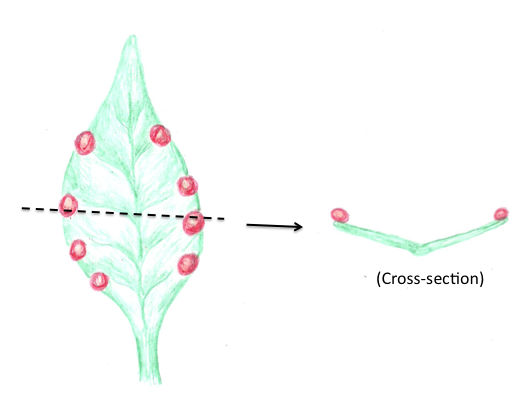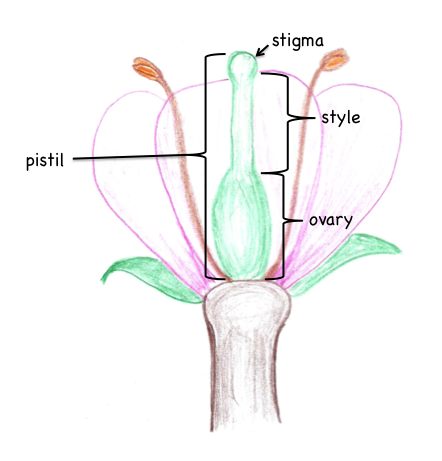The gynoecium
The "gynoecium" refers to all of the carpels in a flower. A carpel is a modified leaf of a flowering plant that has ovules on its edges. Carpels fuse singly or in groups to enclose their ovules.
A flower may have one to many carpels.
If a flower has multiple carpels, they may be separate, each carpel forming a separate pistil, or fused together, forming a single compound pistil.


To determine the number of carpels in a pistil, you must recognize that carpels evolved from leaf-like structures with ovules on their edges.


A cross-section of the ovary of a pistil will often reveal how many carpels make up a pistil. Look at where ovules are attached in the ovary and envision how leaf-like structures with ovules on their edges must be fused to form that ovary.
- In the pistil above, only one carpel makes up the pistil: the carpel surrounds its ovules, and its fertile edges (where the ovules are attached) are fused together to form an internal space called a locule. Ovules are housed inside a locule.
Cross-sections of ovaries from three different pistils are shown below:

How many locules are in Ovary #1? (Click here)
How many locules are in Ovary 2? (Click here)
How many locules are in Ovary #3? (Click here)
How many CARPELS made up the pistil that had ovary #1? (Click here)
How many CARPELS made up the pistil that had ovary #2? (Click here)
How many CARPELS made up the pistil that had ovary #3? (Click here)
Each pistil has a stigma, where pollen lands, a style, though which pollen tubes have to grow to reach eggs in the ovules, and an ovary.
